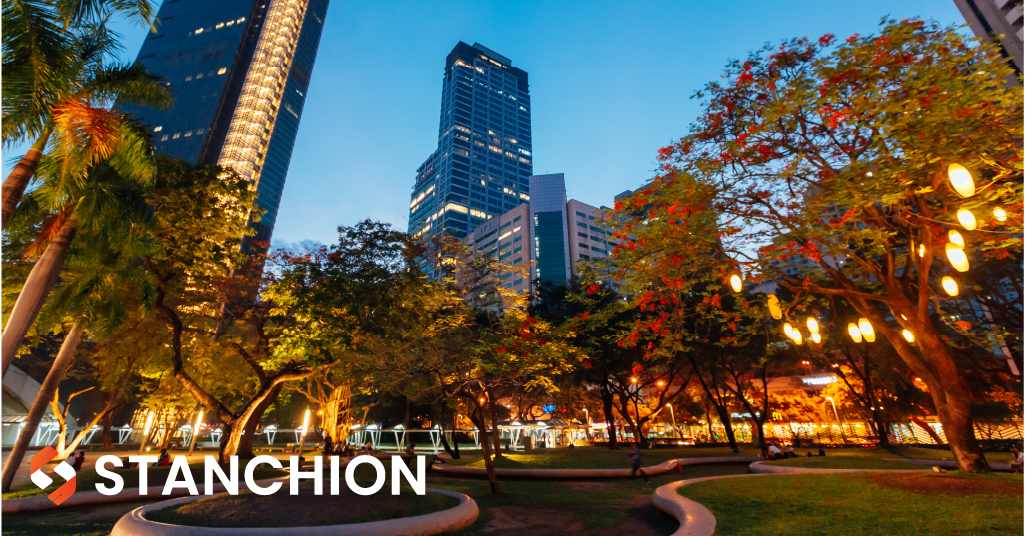
Author: Norman Frankel, Chief Growth Officer, Stanchion Payments Solutions
Arriving in the Philippines from Indonesia on our South-East Asia tour supported by AusTrade was in stark contrast to Indonesia, both in terms of the arrival at the airport and the trip from the airport to the central district. As a European, this was visually what I was expecting of a fast-growing next tier economy – a country that in many ways resembles South or East Africa, and like Indonesia, is a very different kind of fascinating market but still with huge retail payments opportunity.
Its population of circa 116 million people makes it globally the 14th largest country with a young population, whilst Manila, its capital, is approaching 15 million people and apparently is the world’s most densely populated city which surprised me and ranks as the 18th most populous city worldwide.
Continuing our series of informative insights as we explore the next wave of emerging markets that are ready to drive digital issuing experiences, I was fortunate to share this Asian leg of our road trip with two esteemed colleagues.
- Pierre Aurel is Stanchion’s Chief Product officer responsible for driving payments fabric, which the organisation has pioneered in recent years. With a blend of both corporate and entrepreneurial background and his Africa-based innovations, he is a great asset to have on this market tour.
- Levent Barlas, our Regional MD APAC whilst based in Australia, has been operating in the region within the payments domain for 25 years, so he brings a wealth of local insight and connections.
Stanchion has been blessed to have the aegis of the Australian Trade and Investment Commission (Austrade) and a local team. Austrade is the commercial development agency of the Australian Government. In the Philippines its Trade and Invest Commissioner is Bernice Vanguardia, who fluently speaks the local language. We have been impressed by the investment AusTrade is making to help businesses succeed in chosen markets and in this regard Bernice and her team organised a wonderful visit for us.
The article below aims to give the reader a sense of what is happening in Manila, the capital city and the Philippines in terms of both economic development but also the local payments industry. To learn more please read on.
Unlike Indonesia, we had the opportunity to have a weekend in the Philippines, which was hugely valuable to gain insights one would just not expect! For example, the national sport is Basketball, followed by Volleyball. Filipinos love their sport and karaoke. The other surprise is the volume of shopping malls – I have travelled extensively and often thought Dubai was a city with a large volume of malls. The mall infrastructure has been so cleverly built like a rabbit warren of interconnecting malls above which are offices and hotels. Additionally, I don’t think I have been to a city with as many restaurants. The locals enjoy shopping and eating out!
For international business visitors, the two main areas to stay in are Makati and BGC. Both very safe and modern.
Manila and the Philippines’ Economic Centrality and Outlook
Manila has been the Philippines’ economic and cultural heart since 1571, when it became the hub of the Spanish galleon trade, connecting Asia, the Americas and Europe. In fact, the world’s oldest China Town (Binondo) is in Manila though there is little evidence of its age as most of Manila was rebuilt after WWII.
Even after the American colonial period and independence in 1946, Manila remained the country’s political and economic centre and has been evolving into an export-led service-orientated economy.
The Philippines have robust economic expansion. According to the United Nations, GDP growth is projected at 6.1% in 2025 and 6.2% in 2026, within the government’s 6-8% target range. This growth is supported by strong domestic consumption, investments and improved net exports, as well as resilient foreign direct investment inflows despite global trade tensions. However, risks such as geopolitical instability, climate-related disruptions and external economic shocks could impact this outlook.
To sustain growth, the government is focusing on:
- Infrastructure modernisation
- Digital transformation
- SME support and innovation
- Climate action and sustainability
The Philippines have also benefited from ASEAN-wide initiatives, especially QR in nature, that have accelerated digitalisation and access to digital payment systems, particularly for small and medium enterprises (SMEs).
Retail Payments Industry
Owing to the popularity of QR bank transfers and e-Wallets, these make up the larger share of non-cash payments, but cards still hold a reasonable share at around 30% and growing, especially for e-commerce transactions where companies like SwiftPay are the largest local payment processors.
Perhaps owing to the US influence and the volume of shopping malls, credit and charge cards make up 58% of the overall card payment value and consumers like taking advantage of value-added services like loyalty, discounts, instalment features setting it in stark contrast to, for example, Indonesia.
The local card schemes have the largest market share with about 60% of spend. This is followed by Visa and Mastercard at around 18% and 20% respectively and AmEx at 3%. The growth area is in both loyalty with a forecast 17.5% growth and instalment finance products.
The retail payments sector in the Philippines is undergoing rapid digital transformation. Key trends include:
- Instalment Culture driving services like Buy Now Pay Later (BNPL): The BNPL market is expected to grow by 14.6% in 2025, reaching $3.21 billion and projected to hit $5.37 billion by 2030. This growth is driven by e-commerce expansion, younger consumer adoption, and a shift toward digital and flexible payment options.
- Digital Payments and Card Issuing: There has been digital payment adoption growth, with banks and fintech firms increasingly issuing virtual and digital cards. These cards are often instantly issued and tokenised for security, reflecting global trends in card technology and digital wallets. Virtual card issuance is now common, supporting contactless and mobile-first payment experiences.
- SME Digitalisation: Digital payment services have expanded rapidly, providing SMEs with new business models and access to financing. Incubators and accelerators are helping digitally focused start-ups scale and enter new markets.

Powering the Philippines’ Payments Evolution with Stanchion
The Philippines’ payments ecosystem is at a pivotal moment. While led by Paleng QR Ph, which has revolutionised financial inclusion locally, banks now face a stark reality: their traditional dominance could easily fade. New entrants like Digital Banks and Fintechs that can launch new propositions fast will mean that banks, whilst they still have a few years’ brand moat on their side will see that runway shorten. Survival depends on bold, technology-driven transformation. To compete in a mobile-first future, financial institutions must rethink their strategies — moving beyond legacy systems to embrace agile, interoperable digital payment solutions that are broader than just QR.
This is where Stanchion’s Payment Fabric provides a critical advantage. Our modular and adaptive technology bridges the gap between legacy banking infrastructure and next-generation digital payment experiences. By enabling seamless integration across banking platforms, card networks and digital wallets, we empower financial institutions to innovate at speed, optimise costs and deliver the frictionless digital experiences that modern consumers expect.
To remain competitive, banks must invest in robust digital infrastructure, forge strategic partnerships and prioritise customer-centric solutions that match the convenience of mobile money. With a global footprint and deep APAC market expertise born from successful case studies in Oceania, Stanchion is uniquely positioned to support this transition — helping banks build scalable, future-ready payment ecosystems that align with the Philippines’ dynamic, mobile-first economy.
Stanchion is ready to collaborate and shape the future of payments with Philippine banks and fintechs. Having now signed up a local reseller partner in market, over the next few months, we will seek to engage with and hold discussions with banks to explore where they are in the appetite to drive the next phase of digital payment change locally.
Following a successful mission, which has identified a couple of attractive local partners for us to work with, we aim to be back in the region before the Singapore Fintech Festival as well as being at festival in mid-November.
To explore how Stanchion can accelerate your digital transformation in region, please reach out.


 Verto
Verto Switchcare
Switchcare Professional Services
Professional Services

